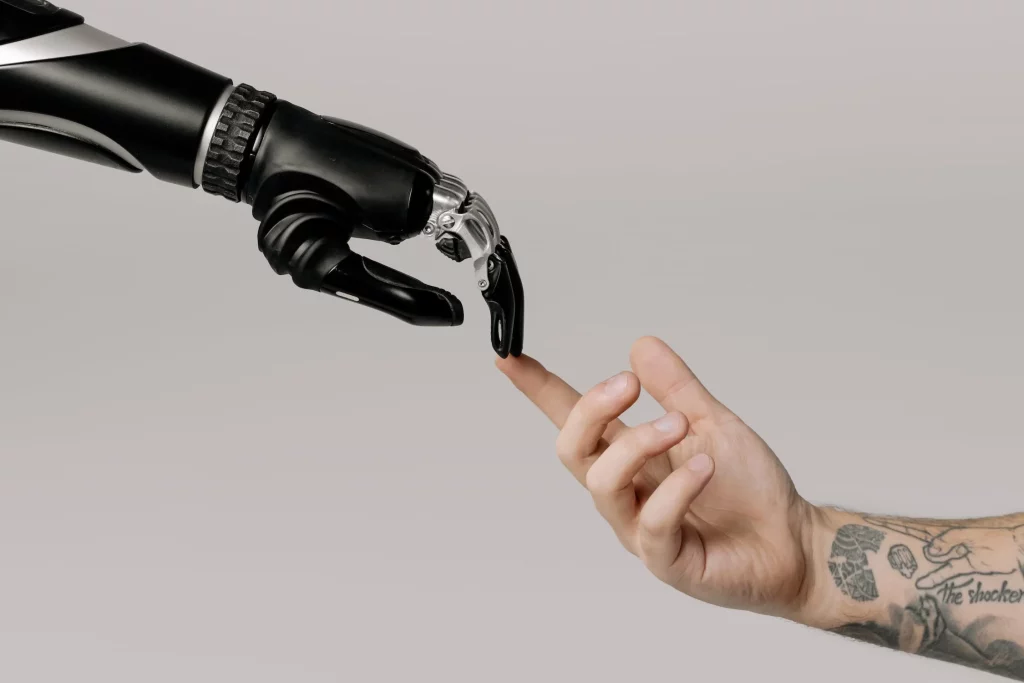In the ever-evolving landscape of business, understanding your customers is the key to success. Customer research, a systematic process of gathering and analyzing information about customers, plays a pivotal role in making informed business decisions and developing effective strategies. In this comprehensive guide, we delve into the types of customer research, the methodologies involved, and best practices for optimal results.
Comprehensive Guide to Customer Research: Types, Methods, and Best Practices
In the ever-evolving landscape of business, understanding your customers is the key to success. Customer research, a systematic process of gathering and analyzing information about customers, plays a pivotal role in making informed business decisions and developing effective strategies. In this comprehensive guide, we delve into the types of customer research, the methodologies involved, and best practices for optimal results.
What is Customer Research?
Customer research involves the systematic exploration of customer behaviors, needs, preferences, and experiences. It combines qualitative and quantitative studies to gain insights into the target audience, facilitating informed decision-making and the development of strategies to meet customer expectations. The essential components of customer research include:
1. Research Objectives
Clearly defining research objectives is paramount. It involves determining the specific information or insights the organization aims to gather, ensuring the collected data aligns with organizational needs.
2. Target Audience Definition
Identifying the target audience is crucial, representing the group the research focuses on. This audience should mirror the organization’s customer base or intended market.
3. Research Methodology
Choosing appropriate research methods is vital. Whether surveys, interviews, focus groups, or data analytics, the methods should align with objectives, providing desired depth and breadth of insights.
4. Data Collection
Conducting data collection activities is core to customer research. Proper techniques, such as surveys, interviews, or data analysis, ensure the accuracy and reliability of gathered information.
5. Data Analysis
Organizing, categorizing, and interpreting collected data is essential. From quantitative techniques to qualitative research, the goal is to derive actionable insights that inform decision-making.
6. Findings and Insights
Effectively communicating research findings involves summarizing and presenting results. Visualizations, reports, and dashboards convey information clearly and understandably.
7. Recommendations
Based on findings, practical and actionable recommendations guide business decisions, whether for product improvements, marketing strategies, or customer experience enhancements.
8. Iteration and Continuous Improvement
Customer research is an iterative process. Regularly incorporating insights into strategies ensures organizations remain responsive to customer expectations and market changes.
Types of Customer Research
Understanding the various types of customer research is crucial for tailoring approaches to specific objectives. Some common types include:
1. Customer Satisfaction Research
Definition:
Customer satisfaction research revolves around measuring and analyzing how satisfied customers are with a product or service. It helps in identifying areas for improvement and gauges overall customer contentment.
Key Elements:
- Surveys and Feedback Forms: Use structured surveys or feedback forms to quantify satisfaction levels.
- Net Promoter Score (NPS): Measures the likelihood of customers recommending a product or service.
Implementation:
Regularly conduct surveys and analyze feedback to gauge customer sentiment, focusing on enhancing areas with lower satisfaction.
2. Customer Needs and Preferences Research
Definition:
This type of research aims to uncover the underlying needs, desires, and preferences of customers. It provides insights into what customers are looking for in a product or service.
Key Elements:
- In-depth Interviews: Engage in one-on-one interviews to delve into the motivations and preferences of customers.
- Observational Studies: Observe customer behavior in real-life scenarios to identify unmet needs.
Implementation:
Conduct qualitative research through interviews and observational studies to gain a deep understanding of customer needs, informing product development.
3. Customer Experience (CX) Research
Definition:
CX research focuses on understanding and optimizing the overall customer journey, identifying pain points, and ensuring a seamless and satisfying experience.
Key Elements:
- Customer Journey Mapping: Visualize the entire customer experience, from initial interaction to post-purchase.
- Usability Testing: Evaluate the ease with which customers navigate through products or services.
Implementation:
Create detailed customer journey maps, conduct usability tests, and analyze customer interactions to enhance overall experience.
4. Brand Perception Research
Definition:
This research assesses how customers perceive a brand, including awareness, image, associations, and loyalty. It helps in shaping and maintaining a positive brand identity.
Key Elements:
- Brand Surveys: Measure brand awareness, associations, and loyalty.
- Competitor Analysis: Understand how the brand compares to competitors.
Implementation:
Regularly conduct brand perception surveys and analyze competitor strategies to maintain a positive brand image.
5. Customer Segmentation Research
Definition:
Customer segmentation involves categorizing customers based on shared characteristics, behaviors, or needs. It enables targeted marketing strategies.
Key Elements:
- Demographic Segmentation: Grouping customers based on age, gender, income, etc.
- Behavioral Segmentation: Segmenting based on purchasing behavior or product usage.
Implementation:
Analyze customer data to identify commonalities, enabling personalized marketing strategies for different segments.
6. Competitive Research
Definition:
Competitive research involves analyzing competitors’ strategies, products, and customer experiences to identify opportunities for differentiation.
Key Elements:
- Competitor Product Analysis: Evaluate features, pricing, and positioning of competitors’ products.
- Social Media Monitoring: Track customer sentiments regarding competitors on social media.
Implementation:
Regularly monitor competitors, analyze product offerings, and gather customer feedback to identify areas for improvement and differentiation.
7. Customer Journey Mapping
Definition:
Customer journey mapping visualizes the end-to-end customer experience, identifying touchpoints, emotions, and areas for improvement.
Key Elements:
- Customer Touchpoints: Identify and analyze all the touchpoints a customer has with the brand.
- Emotion Analysis: Understand customer emotions at each stage of the journey.
Implementation:
Create detailed customer journey maps, incorporating feedback from various touchpoints to enhance the overall journey.
These types of customer research provide organizations with a holistic view of their customers, enabling them to make informed decisions, improve products and services, and stay ahead in a competitive market. Each type serves a unique purpose, and a combination of these approaches ensures a comprehensive understanding of customer behaviors and preferences.

How to Conduct Customer Research: 10 Key Steps
Conducting effective customer research involves a systematic approach:
1. Define Research Objectives
Clearly define specific objectives to guide the research process and focus on relevant questions.
2. Identify Target Audience
Determine the specific target audience or customer segment that aligns with research goals.
3. Choose Research Methods
Select appropriate research methods and techniques, considering advantages, limitations, and resource requirements.
4. Develop Research Instruments
Design clear, concise research instruments such as survey questionnaires or interview guides.
5. Recruit Participants
Recruit participants matching the target audience criteria through various channels, ensuring communication clarity.
6. Conduct Data Collection
Implement chosen research methods, maintaining ethical guidelines, privacy, and data confidentiality.
7. Analyze Data
Use appropriate analysis techniques, whether quantitative or qualitative, ensuring rigor and alignment with research objectives.
8. Interpret Findings
Analyze patterns, trends, and relationships in data to gain insights into customer behaviors, preferences, or needs.
9. Communicate Results
Present findings clearly through reports, presentations, or visualizations, tailored to the target audience.
10. Apply Insights
Apply insights to inform business decisions, enhancing product development, marketing, and customer experiences.
Customer research is iterative; monitor outcomes, conduct follow-up research, and stay responsive to evolving customer needs.
Examples of Customer Research Questions
Crafting effective customer research questions is essential. Examples include:
- What factors influenced your decision to purchase our product/service?
- How did you first hear about our company?
- What specific features or aspects of our product/service do you find most valuable?
- What improvements or enhancements would you like to see in our product/service?
- How likely are you to recommend our product/service to others? Why?
- What obstacles or challenges did you encounter when using our product/service?
- How does our product/service compare to competitors in the market?
- How satisfied are you with the level of customer support you received?
- What are your expectations for pricing and value in relation to our product/service?
- How frequently do you use our product/service, and for what purposes?
Tailoring questions to the industry or service being researched ensures gathering relevant information.

Best Practices for Customer Research
Following best practices is essential for accurate and valuable insights:
1. Clearly Define Research Objectives
Identify specific goals and objectives to guide research, focusing on relevant questions and areas of investigation.
2. Use a Mix of Qualitative and Quantitative Methods
Combine qualitative and quantitative research methods for a comprehensive understanding of customers.
3. Identify Your Target Audience
Clearly define the characteristics and demographics of the target audience for accurate representation.
4. Create Unbiased and Neutral Questions
Formulate clear, unbiased, and neutral questions to avoid leading or influencing participant responses.
5. Use a Variety of Data Collection Methods
Explore various data collection methods, including surveys, interviews, focus groups, and social media listening.
6. Engage With Customers at Different Touchpoints
Interact with customers at different stages, from pre-purchase to post-purchase, to understand the entire customer journey.
7. Maintain Confidentiality and Anonymity
Assure participants of confidentiality and anonymity to encourage honest and unbiased feedback.
8. Analyze and Interpret Data Systematically
Systematically analyze data using appropriate techniques, identifying patterns and key insights.
9. Continuously Iterate and Improve
Regularly revisit research objectives, update methods, and gather feedback for continuous improvement.
10. Communicate Findings and Take Action
Present research findings to stakeholders, using insights to inform strategic decisions, product development, and marketing.
By following these best practices, organizations can conduct effective customer research, gaining valuable insights into customer behaviors and preferences.
Enhance Your Research with IdeaScale
IdeaScale is an innovation management solution that inspires people to take action on their ideas. With features like community whiteboards, services for government and nonprofits, and extensive resources, IdeaScale elevates research and
Empowering Businesses Globally: A Comprehensive Guide to Customer Research by Arensic
Welcome to the realm of Arensic International, your strategic partner in unlocking the full potential of businesses on the global stage. As a leading international market research and management consulting firm, Arensic transcends boundaries to deliver strategic solutions that drive informed decisions and foster sustainable growth.
About Arensic International
At Arensic, we go beyond being a service provider; we are your visionary partner, committed to creating a dynamic and collaborative environment where innovative ideas flourish, decisions are informed, and business growth is realized. Our goal is to be the catalyst for your success in the competitive business landscape.




